Csarnok Square in the 9th District and other parts of Belső-Ferencváros stand on the houses of an Arpad-Era settlement, Szenterzsébetfalva, which stood from the second half of the 13th century until 1526. Then the Turkish army, after winning the battle of Mohács, burned it together with the city of Pest. During the 150 years of Turkish rule, only an abandoned landscape, an empty area, could be seen.
In the Middle Ages, the houses of Szenterzsébetfalva stood in the area, later a cemetery operated on the site of Csarnok Square, which was established in 1896 (Photo: Lívia Blázsovics / pestbuda.hu)
A part of today's Csarnok Square housed a cemetery from the late 1600s, where people belonging to the Eastern Orthodox denomination were buried. Traces of this were last found by archaeologists of the Budapest History Museum in 2016 when the remains of 285 people were unearthed during a pre-construction excavation.
After the expulsion of the Ottomans, in the second half of the 18th century, the parcelling of plots in the immediate vicinity of Pest resulted in the acceleration of urbanization: an increasing number of houses appeared again in the area. The Orthodox cemetery was still in operation but on a smaller and smaller area. After 1793 it was no longer marked on the maps depicting Pest. By 1830, houses with small floor spaces were built on the site, a total of ten. According to the address registers of the time, these buildings were inhabited mainly by cobblers, millers, fishermen and boaters. The proximity of the riverbank and the market operating there attracted an increasing number of fruit and vegetable traders as well as butchers in the 1870s and 1880s.
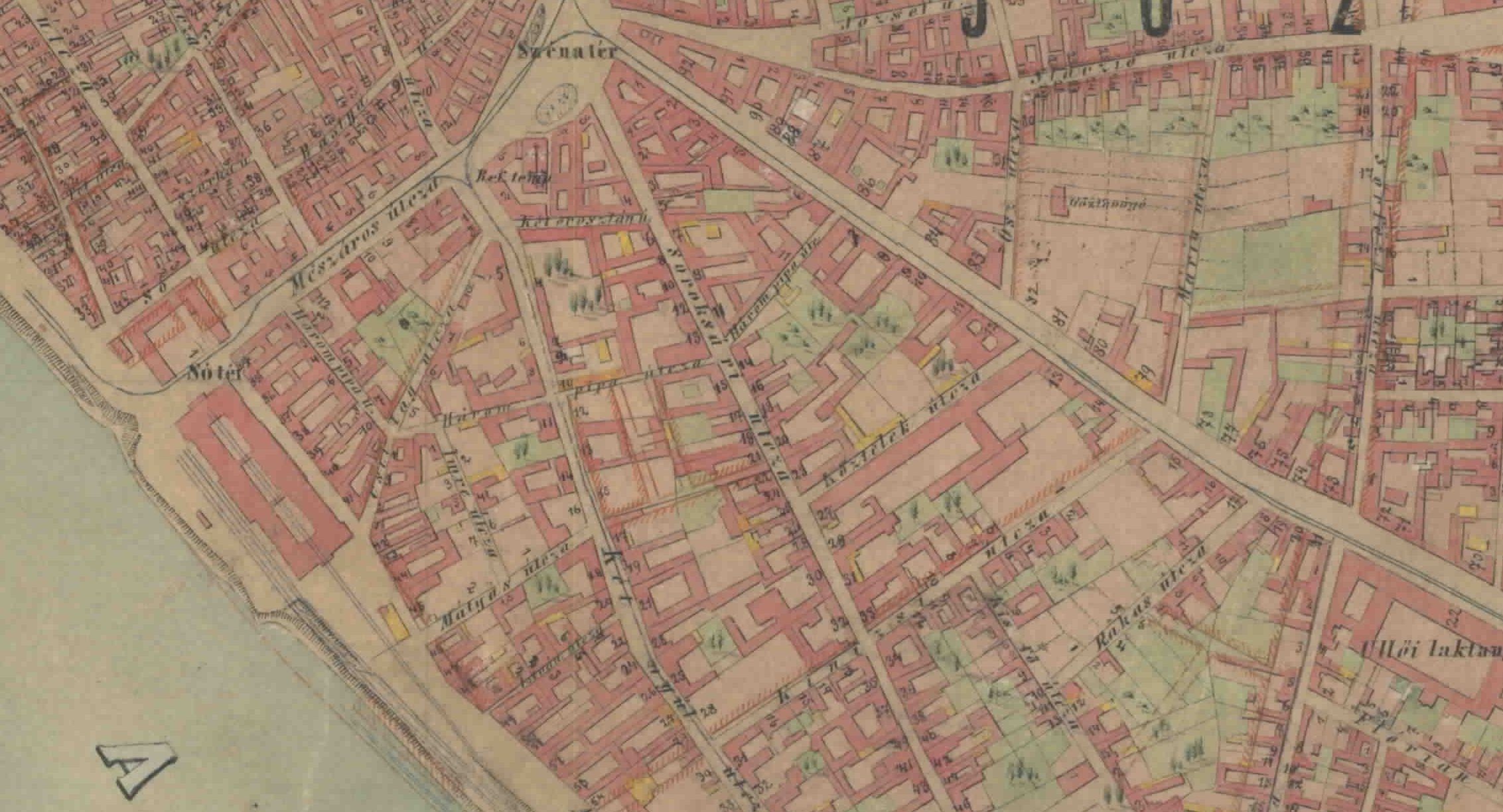
Part of a map from 1872, on which the Fővámpalota (‘Main Customs Palace’) can already be seen next to Sótér (Salt Square), today's Fővám Square, but today’s Great Market Hall and Csarnok Square there are houses marked in red (Source: Ferencváros Local History Collection)
Practical thinking resulted in these traders looking for a place to live as close as possible to their place of work. They were not very nice or eye-catching, but they satisfied the most important needs. The situation changed fundamentally around 1895.
By this time, the iron frame of the Great Market Hall was already standing, but behind the huge building, it became necessary to create a space to ensure the hall could be approached from all directions after its opening planned for 1896. The ten residential houses were demolished, and after the earthworks, Ferencváros got a new square. Naming was no longer a complicated task.
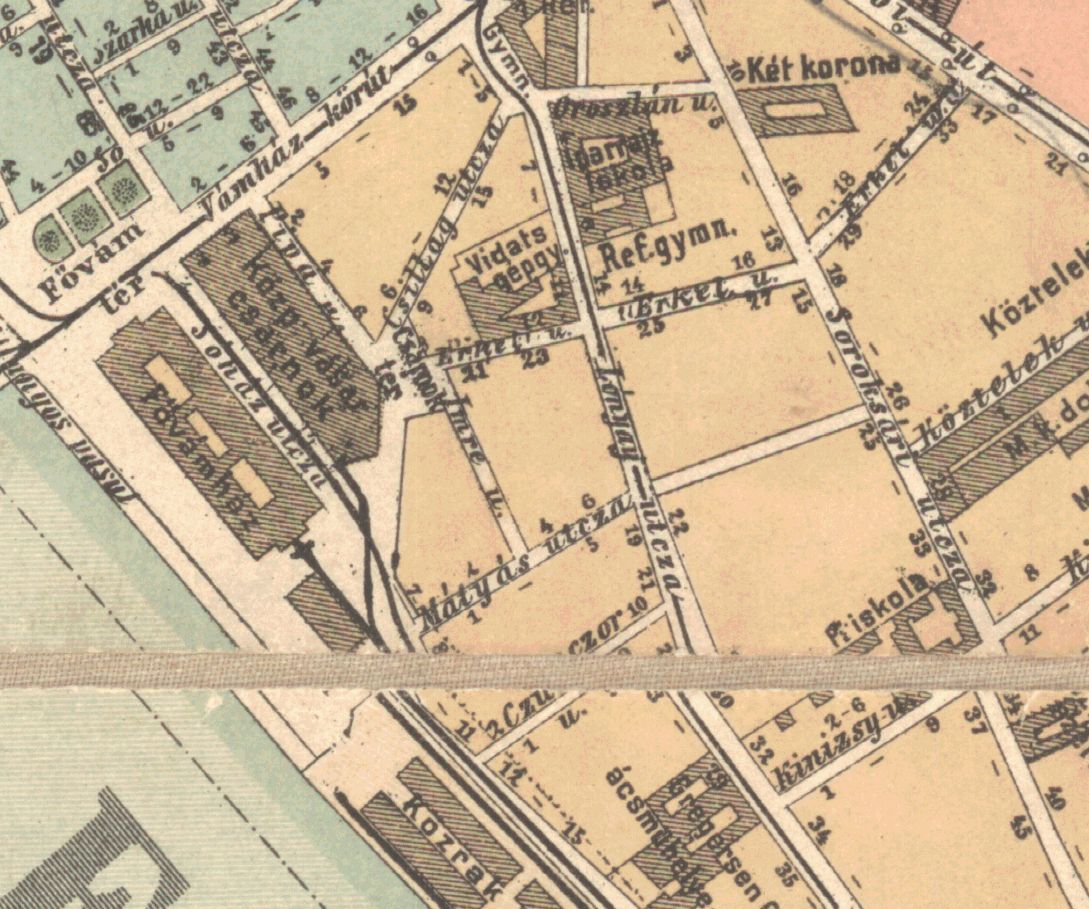
This 1903 map already shows the Great Market Hall and the small Csarnok Square (Source: Ferencváros Local History Collection)
In the following decades, Csarnok Square was the venue for open-air markets, where vendors, who did not have their own stand in the Vásárcsarnok, sold their goods. Mainly florists, vegetable growers, and merchants who offered household utensils to those interested worked here.

Buyers and sellers on Csarnok Square in 1957 (Source: Fortepan / No.: 129397)
The advent and growth of car traffic from the 1960s onwards has steadily pushed sales into smaller and smaller spaces. Now the need for parking only allows space for Christmas tree vendors a few days a year before the holidays.
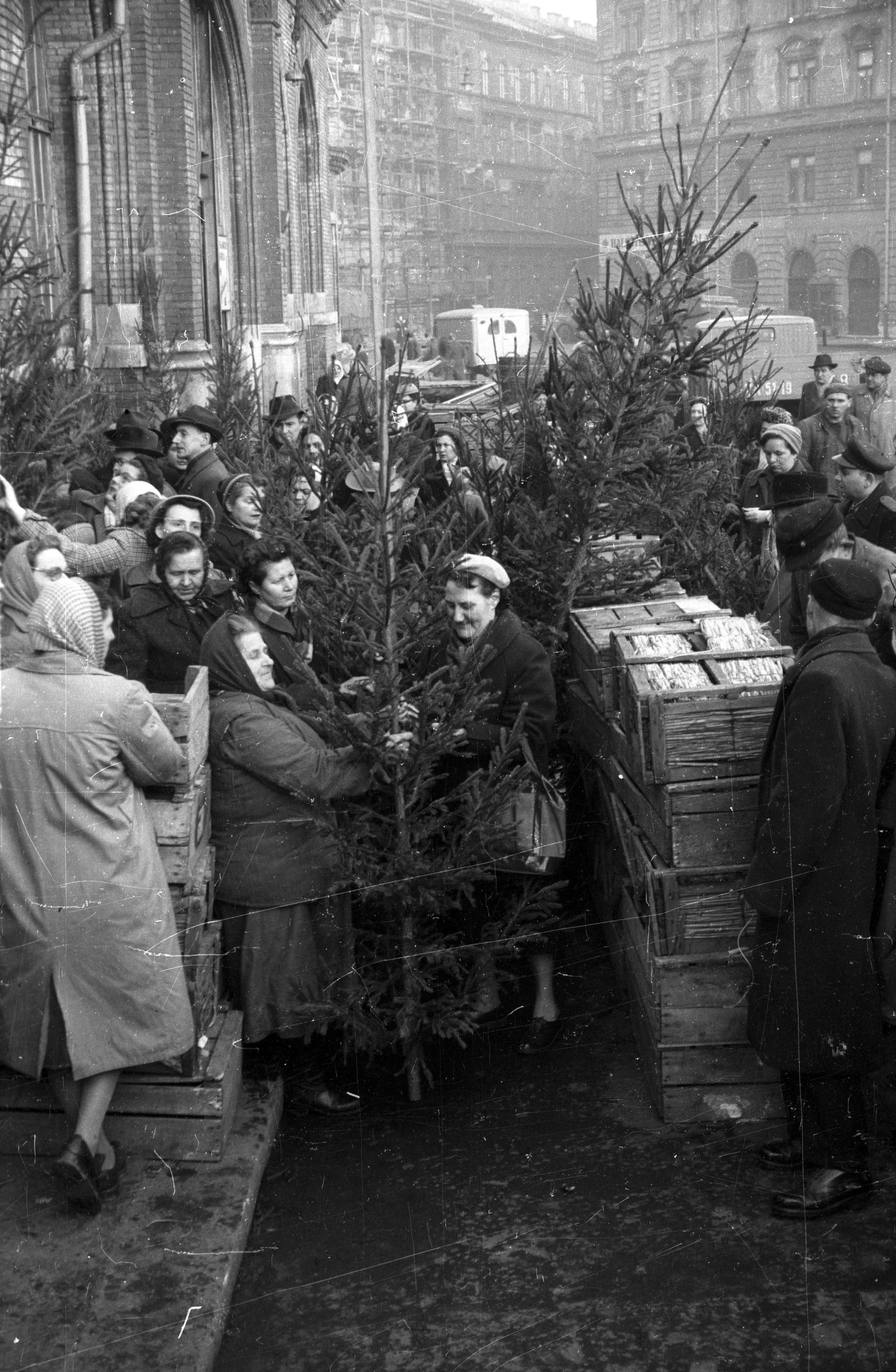
Vegetable vendors are no longer on Csarnok Square, but Christmas tree vendors still offered pine trees before the holidays in 1959 (Source: Fortepan / No.: 117123)
On the east and north sides of the square, meanwhile, houses were built that provided modern housing at the turn of the century for those wishing to move here (very often descendants of merchants who had moved in 20-30 years earlier). The house at 5 Csarnok Square was built in 1897, commisioned by Gusztáv and Zsigmond Politzer. The brothers turned their wealth from the food trade into stocks.
The house was originally designed by architect Sándor Staerk in a way that the ground floor tract - which also had a facade facing Gönczy Pál Street and Erkel Street - besides housing a restaurant, it provided fishmongers with a way to store their fresh merchandise and transport it to the market hall.
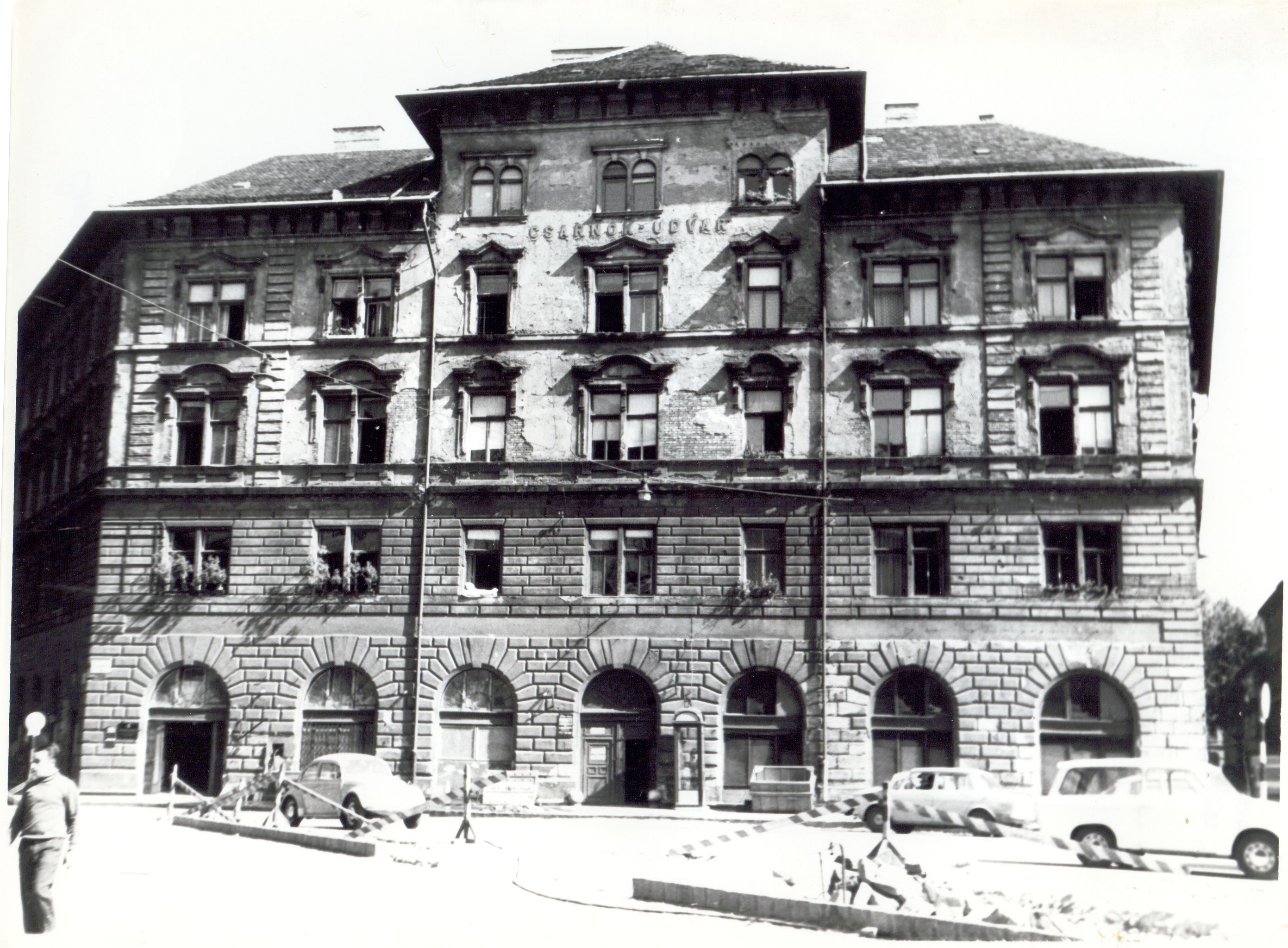
Building at 5 Csarnok Square around 1970 (Photo: Ferencváros Local History Collection)
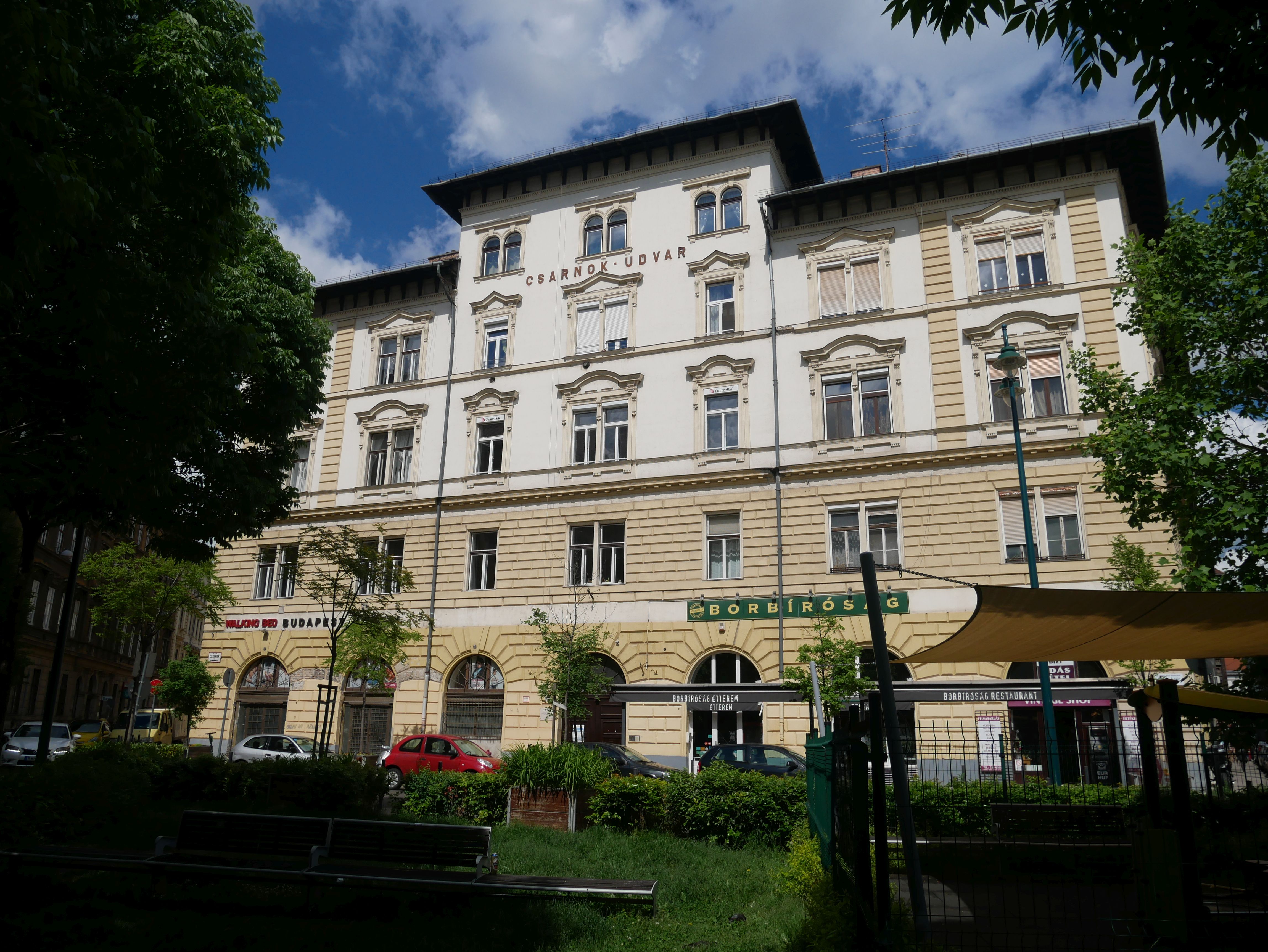
Building at 5 Csarnok Square in 2021 (Photo: Tímea Simon)
The huge building at 3–4 Csarnok Square was built in 1905 according to the plans of István Paulheim. In 1917, a member of the architectural dynasty sold the house to a certain pepper wholesaler named József Mahdal, who had his own stand since the market hall had opened. The vast majority of tenants in the buildings were also involved in the grocery trade. A large-scale restaurant, the Csarnok Kávéház (Market Hall Café) operated on the ground floor and was a popular spot for wholesalers.
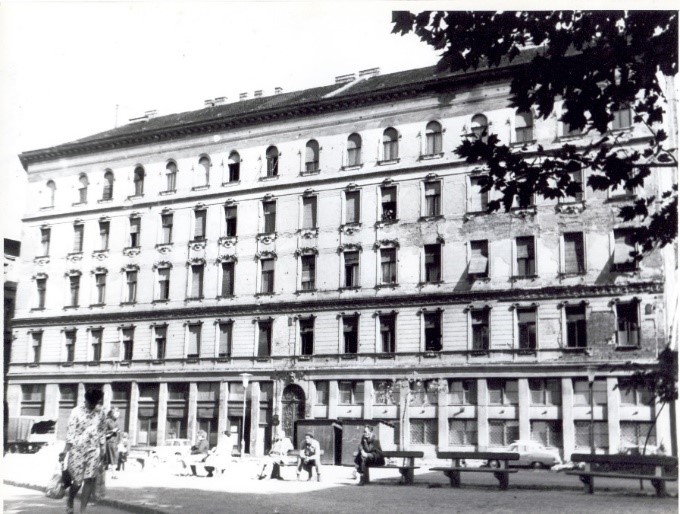
House at 3-4 Csarnok Square around 1970 (Photo: Ferencváros Local History Collection)
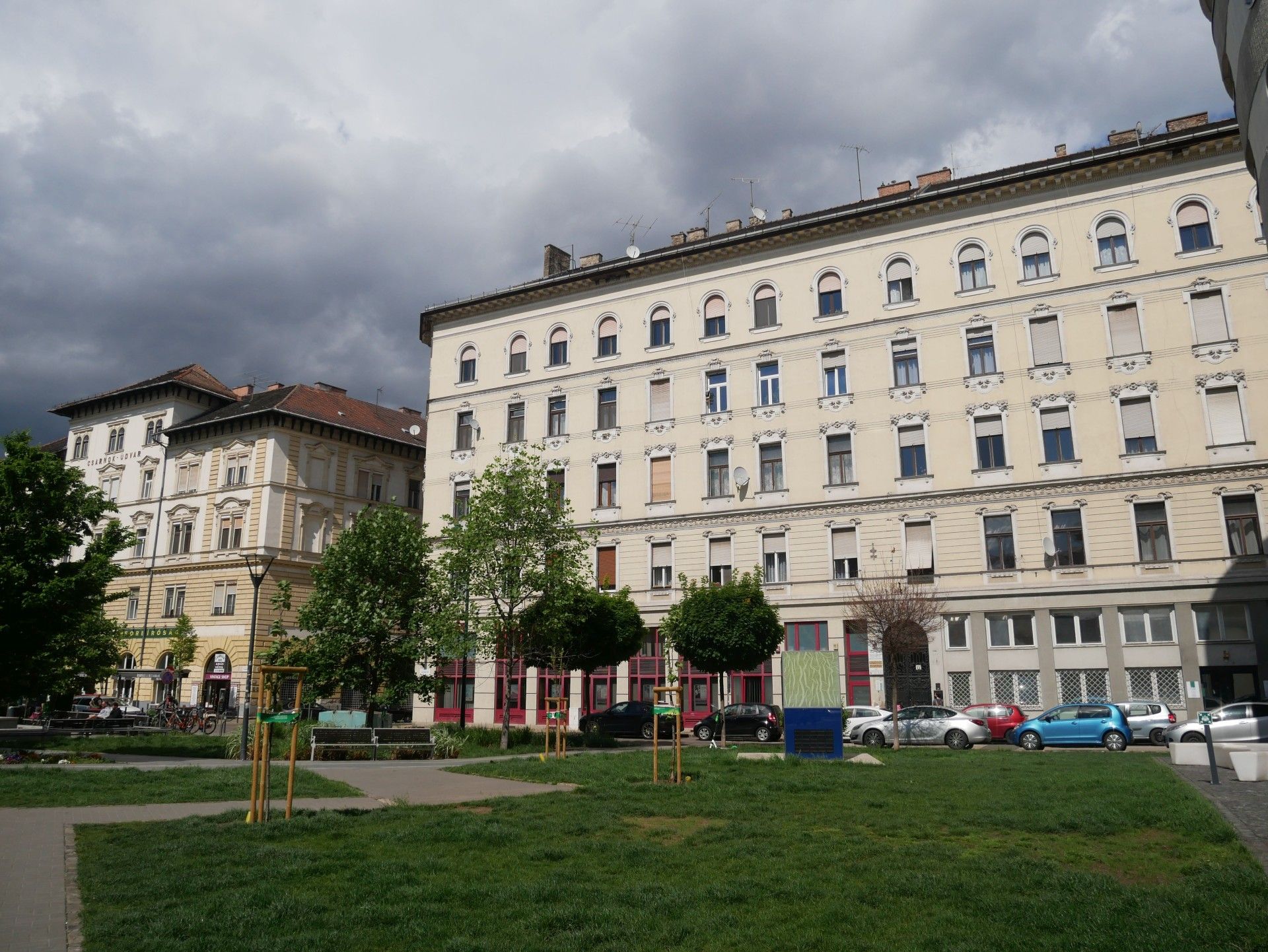
House at 3-4 Csarnok Square in 2021 (Photo: Tímea Simon)
On the north side of the square stands perhaps the most valuable house from an architectural point of view. It was built in 1875 commissioned by historian Mihály Horváth, the Minister of Religion and Public Education of the Hungarian government led by Bertalan Szemere according to the plans of Mór Kallina. Unfortunately, the former clergyman who returned home from emigration could not enjoy the comfort of this Neo-Renaissance-style apartment building for long (though the first-floor apartment with a beautiful balcony and windows overlooking Csarnok Square and Pipa Street must have been comfortable) because, in 1878, he was escorted from this house to his final resting place in the Kerepes Cemetery (today Fiumei Road National Cemetery).
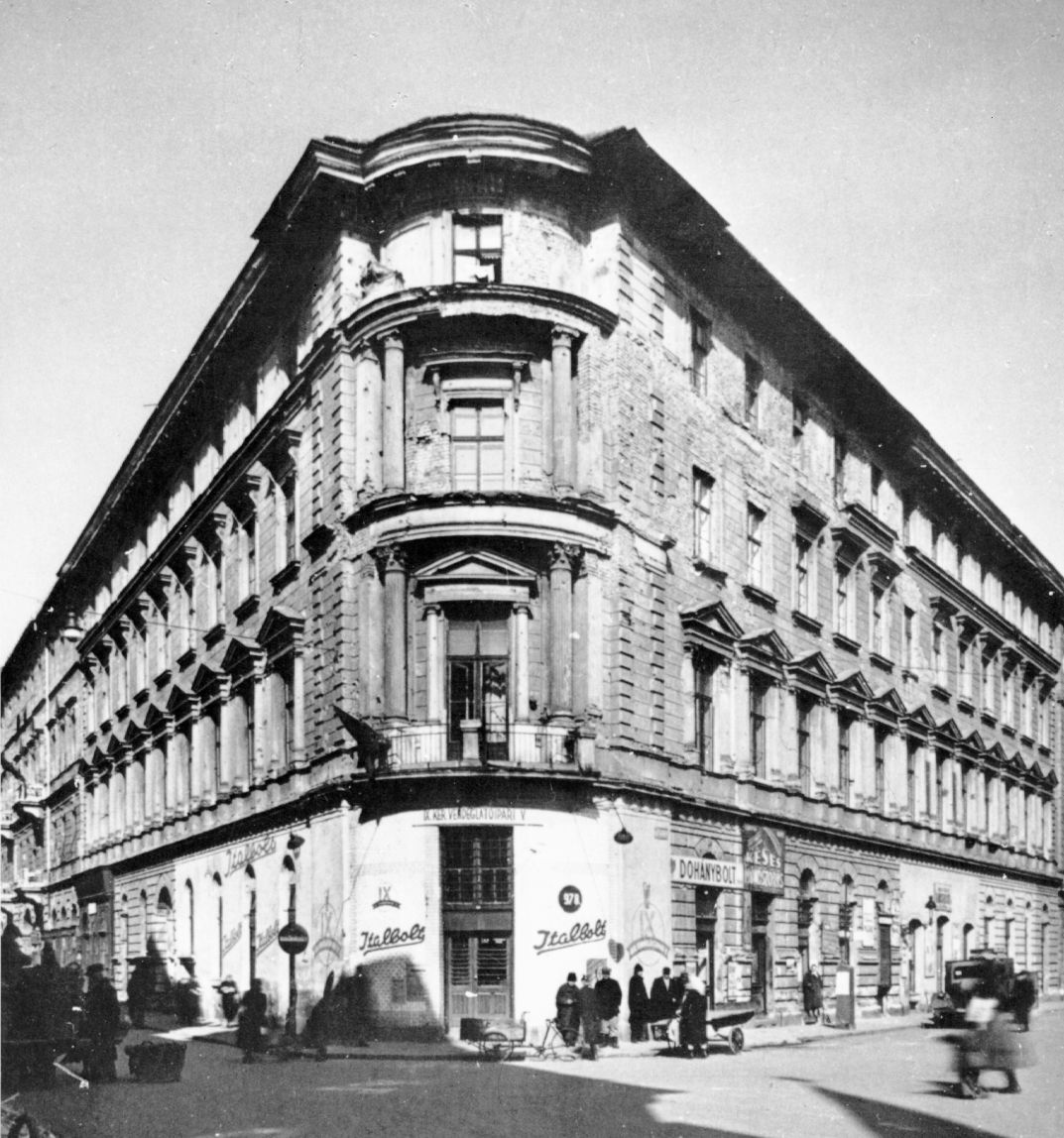
Mihály Horváth's house on the corner of Csarnok Square – Pipa Street around 1950, built according to the plans of Mór Kallina (Source: Ferencváros Local History Collection)

The Neo-Renaissance style house in 2021 (Photo: Tímea Simon)
The square was bordered by two more buildings until the end of the 20th century, one of which is the oldest house there and is also connected to the food trade, more specifically to fishing and the fish trade. Officially, the small building that has been standing on the corner of the square since 1873 is 2 Imre Street.
The Fanda House nowadays (Photo: Lívia Blázsovics / pestbuda.hu)
It was first owned by a wagon-maker, but from 1896 it was used by the fisherman Fanda family and was known for decades as one of the central places for fish sales throughout the city. Today, the building is in a dilapidated state. Only the inscription FANDA FERENCZ HALÁSZ M. above the entrance reminds visitors of its former glory.
Inscription on the house (Photo: Lívia Blázsovics / pestbuda.hu)
The other notable building is the transformer house built in 1966 on the south side of the square. According to the statement published in the contemporary professional press (Magyar Építőművészet (Hungarian Architecture), No. 1966/1):
"The location of the station was determined by energy demand, and consumer activity on the designated Csarnok Square. The purpose of the building does not justify breaking the uniform façade of residential buildings, even if it must turn inwards and fall back from the street to some degree. The structure had to be integrated into the cityscape, without denying its nature as an industrial building, a façade had to be built."
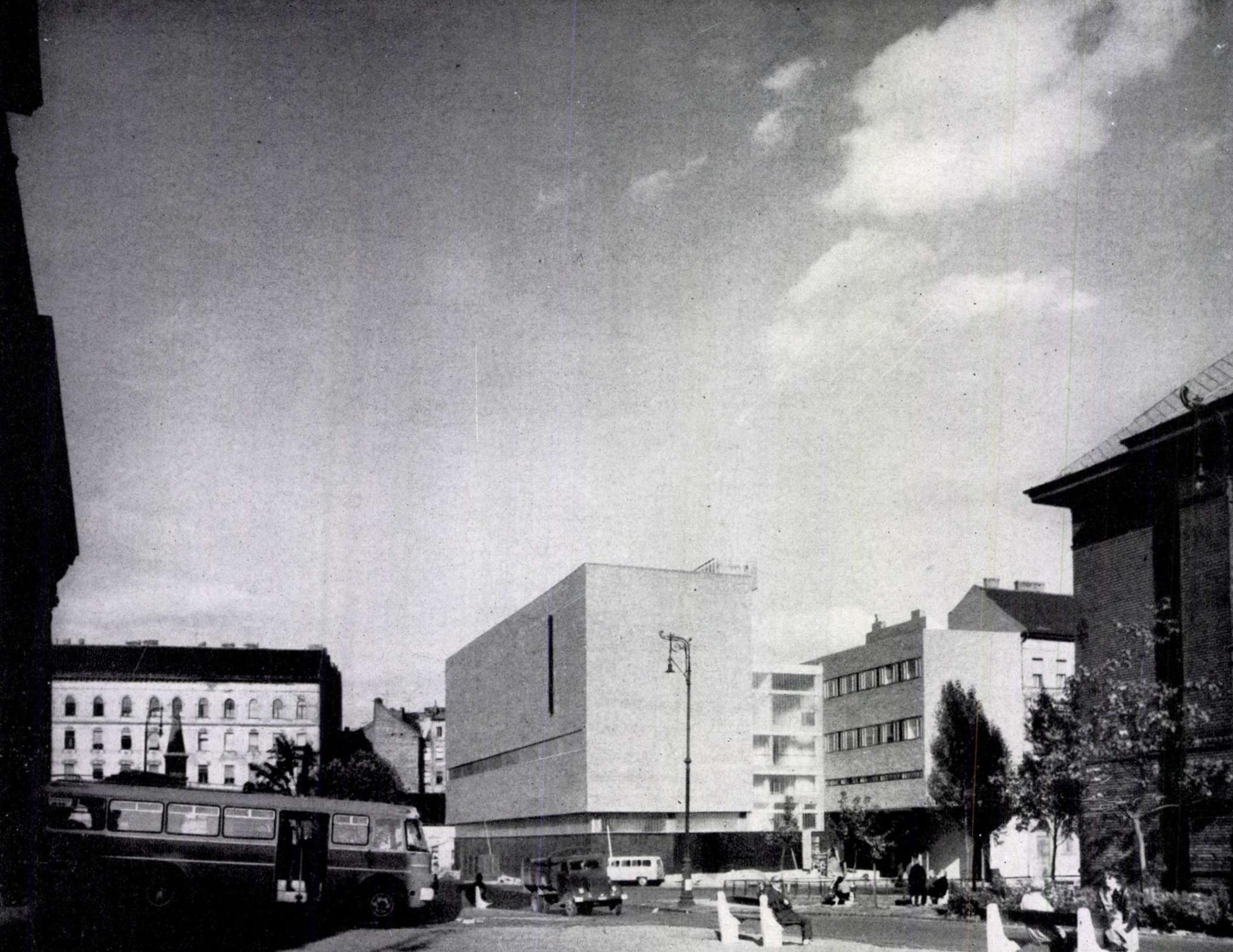
The transformer house in Csarnok Square (Photo: Magyar Építőművészet, No. 1966/1)
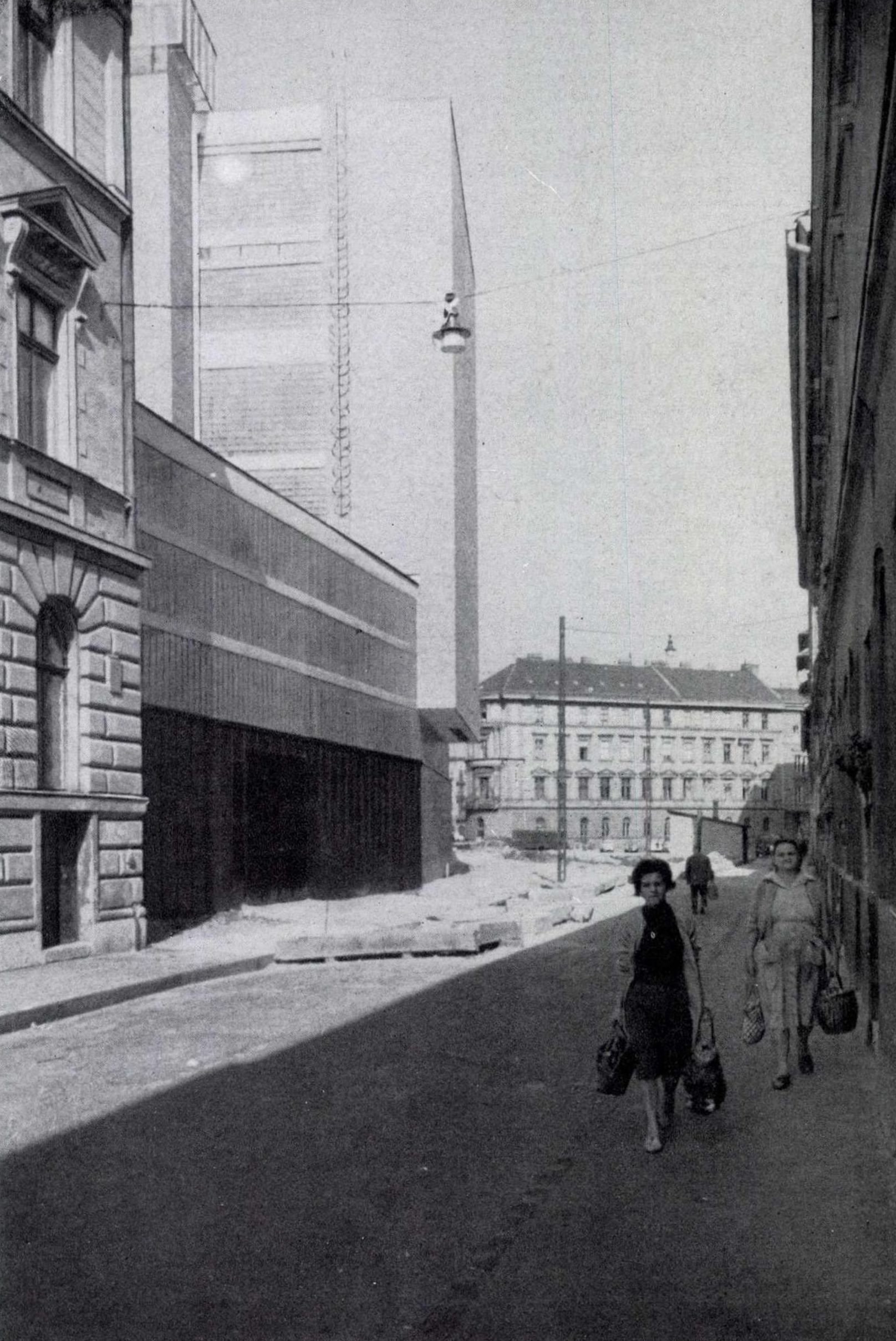
Csarnok Square from Imre Street (Photo: Magyar Építőművészet, No. 1966/1)
@04.jpg)
The transformer house in Csarnok Square (Photo: Ferencváros Local History Collection)
Its industrial character has since had a significant impact on the overall view of Csarnok Square, and unfortunately, the hotel built recently has not improved it either.
The recently built hotel, behind it part of the transformer house (Photo: Lívia Blázsovics / pestbuda.hu)
But to avoid a sad ending, let us remember a development that resulted in the square being repaved, a fountain being installed with a small playground, and even public art. As a result, a pleasant square has replaced the sight of cars parked on top of each other.
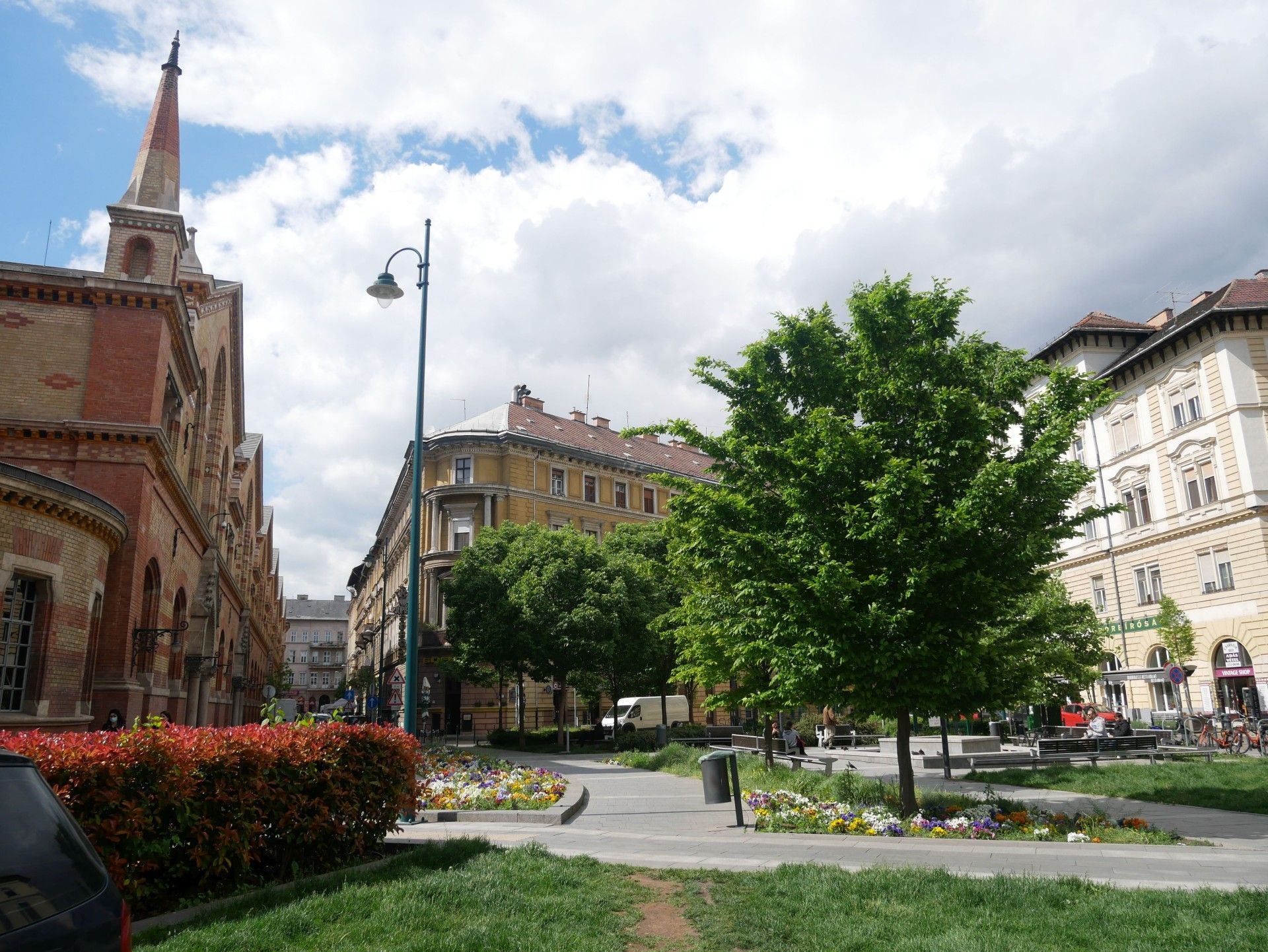
The renovated Csarnok Square in 2018, on the opposite side, is the house of Mihály Horváth, to the right is 5 Csarnok Square, to the left is the Great Market Hall (Photo: Ferencváros Local History Collection)
Cover photo: Csarnok Square (Photo: Lívia Blázsovics / pestbuda.hu)

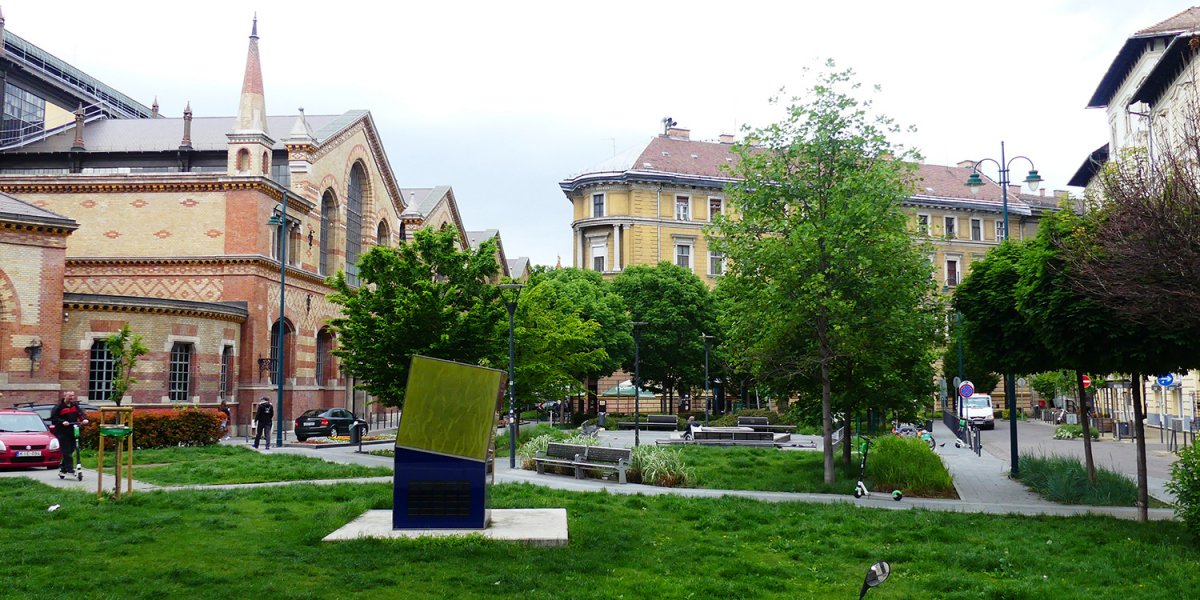



































Hozzászólások
Log in or register to comment!
Login Registration